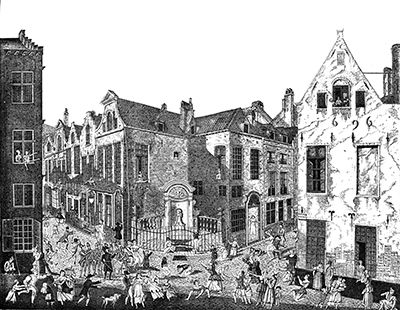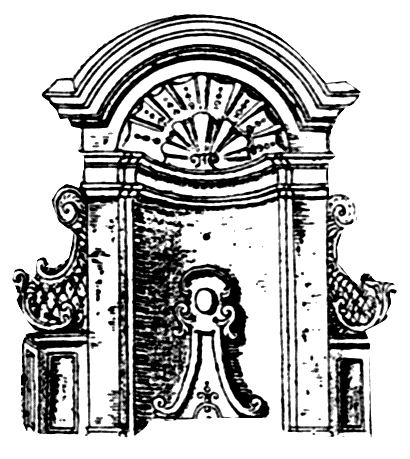
February 6, 1818
The straitjacket for "the murderer"
from Manneken-Pis
"... This day, February 6, 1818, eleven o'clock in the morning, as a consequence of the judgment rendered by the Court of Assizes of the province of Brabant on November 5, 1817.
I, the undersigned, Registrar-in-Chief of the Superior Court of Justice, being at the crossroads of one of the Town Hall chambers overlooking the Grand Place of that city of Brussels designated for execution, have seen and recognized that the executioner of the criminal judgments of justice accompanied by the royal constabulary, led on this place the name Antoine Licas, aged of thirty-three years, convict pardoned painter in buildings born and domiciled in Brussels, condemned by the judgment of the Court of Assizes aforesaid to hard labor for life (...)
The said Antoine Licas is mounted on the scaffold and was attached by the collar with an iron ring, having above his head a sign bearing in bold and legible character his name, profession, domicile, the cause of his conviction, the case that he was pardoned convict, his sentence (...)
After the said Antoine Licas had thus remained exposed to the eyes of the people for an hour, I saw and recognized at noon time that the executor detached it, tied it to a post erected on the ground. scaffold, and applied to him with a hot iron, on the right shoulder, the imprint of the letters TP and then, having detached it from the post and having him put back his clothes, he deposited it in the hands of the royal constabulary to be taken back to the house of justice (...)
A guilty man quickly found ...
What abominable crime Antoine Licas guilty of deserving the shame of shackles, withering and a sentence to forced labor for life?
On the night of October 4 to 5, 1817, the statue of Manneken-Pis disappears from its base.
A "kidnapping" that sows excitement throughout the city.
Police and maréchaussée are actively looking for the statuette and its captor.
A few days later, they arrest a man called Licas, who already has lines on the horns since he is a pardoned pardon.
In a rush of questions, the individual confesses very quickly his larceny and agrees to reveal the place where he has hidden his booty.
This is how we recover our little hero buried on a wasteland of the old city walls, somewhere between the Namur gate and the Louvain gate.
Alas! Licas, who stole the statuette only with the intention of selling the bronze to a junk dealer in the rue Haute, did not hesitate to break Petit Julien with mass shots before burying the debris.
For the good people of Brussels, this is a real "assassination" ...
A justice that does not joke ...
Is it because he is a recidivist or is there an example?
Still, Justice does not joke with this crime of "lèse-Manneken-Pis".
November 5, 1817 - just a month after the events, which is an ultra-fast delay - the Assize Court of Southern Brabant condemns Licas "... for stealing the statuette called Manneken-Pis, committed in the night from October 4th to 5th, 1817, with the help of climbing in a grilled enclosure which surrounds a public fountain at the corner of the street of the Oak and the Oven, with the penalty of hard labor in perpetuity (...)
Ordered that before suffering his sentence, he will be attached to the yoke set on one of the public squares of the city of Brussels and that he will remain there exposed to the eyes of the people for an hour.
A sentence commuted by King William ...
The penalty of forced labor in perpetuity was, however, commuted by King William: Licas saw his sentence reduced to twenty years of hard labor by a decree of grace.
The Sovereign of The Hague was a long way from Brussels, and no doubt he did not know anything about the character of Manneken-Pis?
As for our little hero, he is not restored but remade and relocated to his domain on December 6, 1817, to the general satisfaction of the Brussels population
